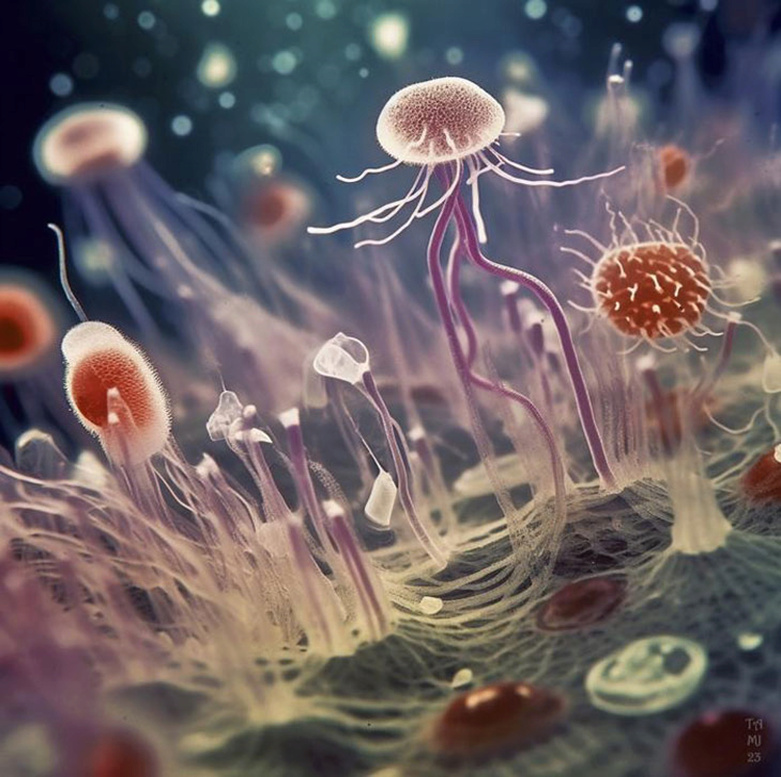Scientists Discover 'Lost World' Over 1 Billion Years Old

Artistic interpretation of a group of early eukaryotes suspended above a microbial mat —
This work disrupts the chronology of the evolution of life on Earth
Fossilized lipid compounds discovered in rocks around the world have revealed a community of previously unknown organisms that shaped Earth's ecosystems more than a billion years ago.
PRIMITIVE EUKARYOTES
There are three main domains of life on Earth : single-celled bacteria, archaea and the more complex eukaryotes . Although it has the fewest members, this last group is the most familiar to us: it includes the entire animal kingdom, plants, algae, fungi and certain single-celled organisms such as amoebas.
The main feature distinguishing eukaryotes comes down to the presence of a nucleus and other complex elements, such as mitochondria, within their cells.
Essential to cell function, sterols are one of the main markers of eukaryotic life. While their presence is commonly documented in fossil beds around 800 million years old, they are rare in older sedimentary layers. This led researchers to speculate that eukaryotes existed long before that date, but in more primitive forms that probably produced different lipid molecules.

In work published in the journal Nature , researchers examined their counterparts produced by modern eukaryotes, and used different advanced techniques to " deconstruct " them and gain insight into the composition of molecules that their distant ancestors might have produced.
'PROTOSTEROLS' DATING BACK 1.64 BILLION YEARS
Armed with these results, the team analyzed ancient rocks from around the world, and discovered that these "protosterols" were abundant in samples dated more than 800 million years ago. The most distant occurrences being identified in sediments formed 1.64 billion years ago, extracted from Australia's Barney Creek formation.
Although their appearance remains mysterious, these early eukaryotes that thrived in marine environments around the globe were likely larger and more complex than the bacteria and archaea existing at the time, which would have potentially figured on their menu, making them the first known predators.
Their long reign would have ended when more advanced eukaryotes, such as red algae, began to appear. Adapting better to changing environmental conditions, these organisms evolved into the complex animals, plants and life forms we know today.
Source : websites

